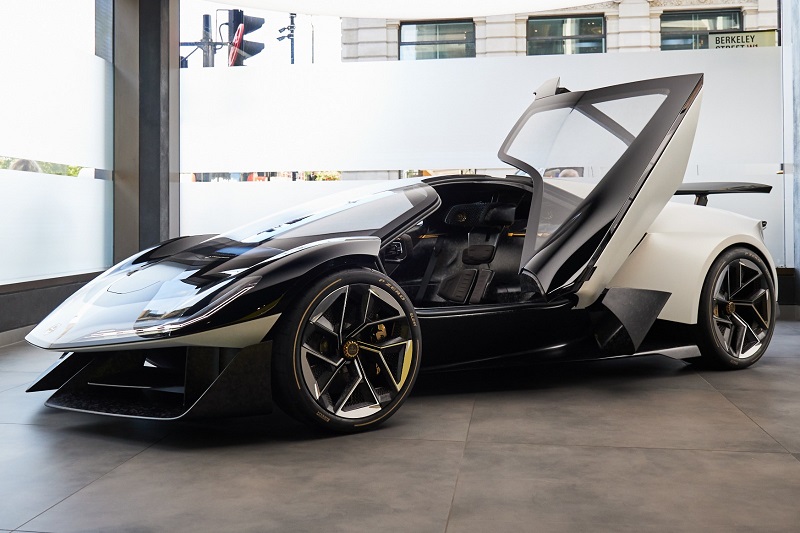London, UK – British automotive icon Lotus has officially unveiled its latest innovation, Theory 1, a groundbreaking concept car that serves as the blueprint for the future of intelligent performance. This visionary vehicle debuts alongside The Lotus Theory, the company’s new design manifesto, defined by three core principles: Digital, Natural, and Analogue (DNA).
This blend of futuristic technology and high-performance engineering aims to deliver a seamless driving experience, with Theory 1 adapting intuitively to the needs of its driver. The concept car is set to establish new benchmarks in the realm of immersive, intelligent driving.

Breaking Down the Lotus Theory
The Lotus Theory reimagines performance through three guiding principles:
- Digital: Offering an immersive and intuitive user experience.
- Natural: Creating emotionally connected, human-centric designs.
- Analogue: Continually advancing the brand’s performance engineering, respecting its racing heritage.
Ben Payne, Vice President of Design at Lotus, emphasized the significance of Theory 1 in the brand’s evolution:
“Theory 1 pushes the boundaries of what it means to drive a performance vehicle, merging digital and analogue capabilities to craft an immersive experience filled with emotion, functionality, and connectivity,” Payne stated.
Innovative Driver Experience with LotusWear
At the heart of Theory 1 is LotusWear, an adaptive driver system that revolutionizes the in-car experience. Through inflatable pods embedded in the seating and steering wheel, the system offers real-time, haptic feedback to enhance driving precision and comfort. Designed in collaboration with MotorSkins, a leading developer in wearable robotics, this technology brings unprecedented interactivity between the car and its occupants.
The driver’s engagement is further elevated by five driving modes (Range, Tour, Sport, Individual, Track), which continuously adapt to the surrounding environment, optimizing efficiency and performance.
A Revolution in Automotive Design
Theory 1 also introduces a holistic design approach that minimizes material use, a move aligned with Lotus’ commitment to sustainability. With only ten main materials—ranging from recycled carbon fiber to titanium—the “Challenge of 10” design ethos signifies a revolutionary step toward minimalism and environmental responsibility. This streamlined approach echoes the company’s lightweight construction philosophy, drawing inspiration from Lotus’ rich racing history.
Advanced Aerodynamics and Dynamic Architecture
Performance remains central to Lotus’ mission, and Theory 1 showcases advanced aerodynamics, including an active rear spoiler and cooling systems that enhance efficiency and stability. Drawing inspiration from Formula 1, the vehicle integrates cutting-edge technologies such as steer-by-wire for precision control and a low center of gravity to enhance driving dynamics.
Theory 1 is also equipped with a sports car door system, allowing for easy access in tight spaces, a feat unmatched by conventional high-performance vehicles.
Future of Performance: Beyond the Concept
While Theory 1 is not intended for sale, it acts as a concept platform for the innovations Lotus aims to implement across its future lineup. Its groundbreaking technologies, sustainable design, and commitment to driving excellence signal a new era for the brand.
As Lotus transforms into a global performance technology powerhouse under its Vision80 strategy, Theory 1 sets the stage for a new generation of electric, intelligent vehicles, with performance, simplicity, and emotion at their core.
| Powertrain and Performance | |
| Category | Theory 1 |
| Battery capacity | 70 kWh |
| 0-100 km/h (0-62 mph) | <2.5 seconds |
| Max power | 1000 PS |
| Top speed | 320 kph |
| WLTP combined range | 402 km / 250 miles |
| Drivetrain | |







